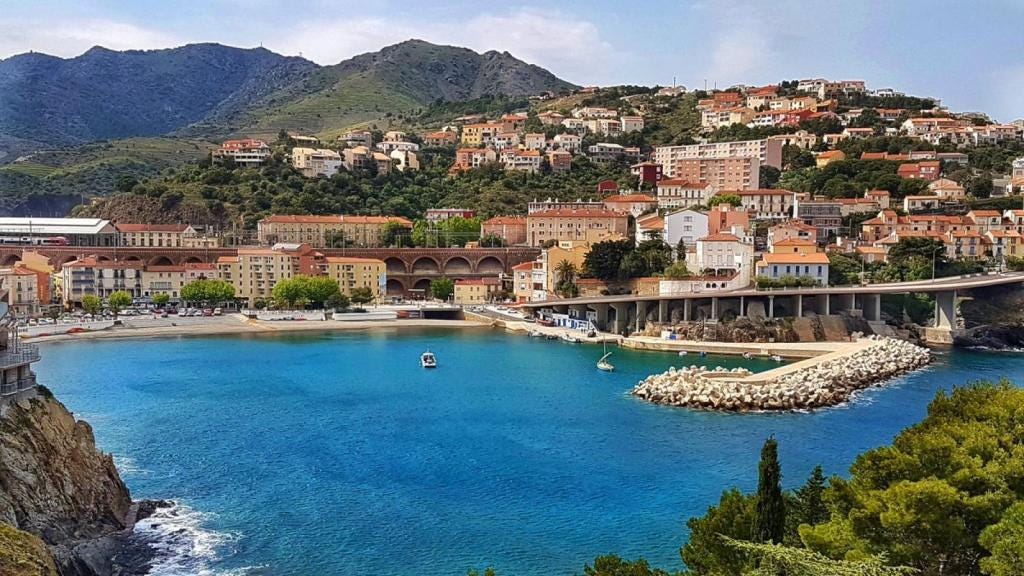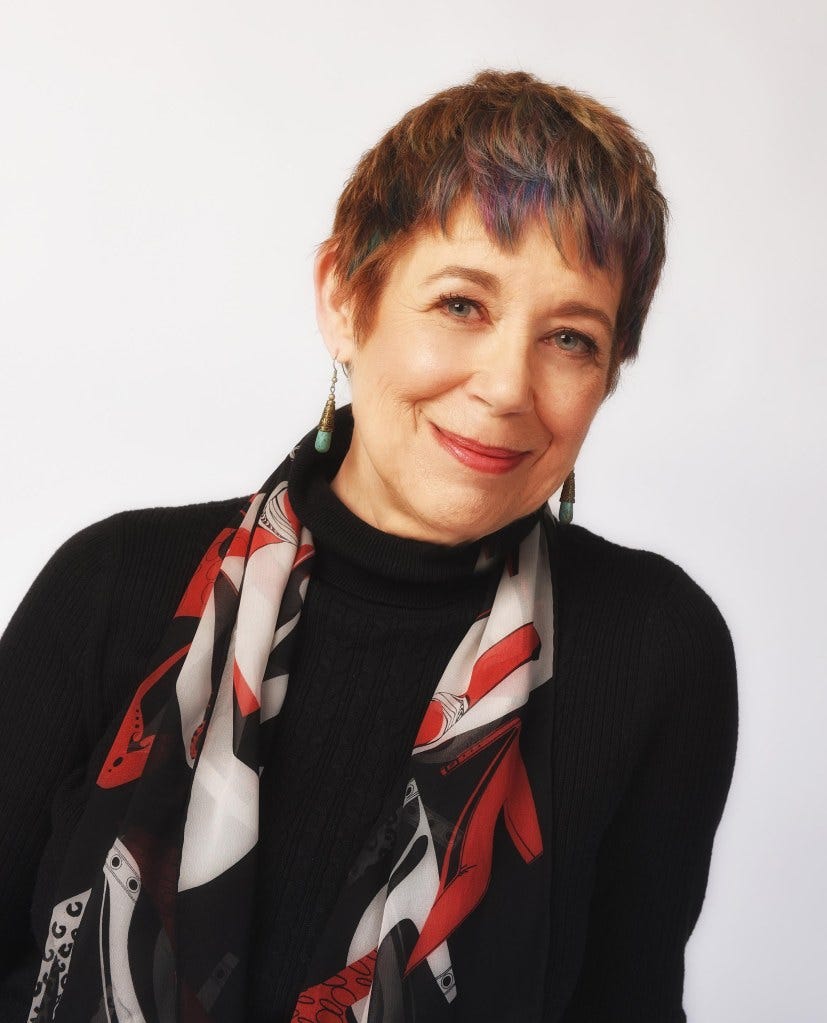Finding César: Linda Joy Myers on conducting research in France for her WWII novel THE FORGER OF MARSEILLE
Sarah, a young Jewish artist, flees from Berlin to Paris and then on to Marseille, where she joins the Resistance, working as a forger of false papers that save lives.
The man in my novel didn’t exist before the little red and grey Fiat chugged up the winding road from Cerbere to the Spanish border at the top of the Pyrenees. Someone like him must have existed once. Those who’d fought and died in the Spanish Civil War are the voices of history, no longer able to speak for themselves. The idea for my research trip to France and into Spain was to test the idea of writing a novel about the 1940 rescues of artists by my character, Sarah. As did many who were in the resistance, she had to become several different people as the story progresses.
The idea for The Forger of Marseille was sparked as I learned about the real-life rescuers Varian Fry and Donald Caskie, among other courageous souls, who risked their lives for these rescues after the fall of France. Writing a historical novel means imagining and creating a way for the dead to speak, characters that bring an era to life. I had been “thinking” about writing this book for several years, but it seemed daunting to make things up. I’ve been a memoirist for twenty-five years.
That summer afternoon, my attention was on the thrilling brilliance of the emerald blue Mediterranean Sea rolling calmly from the edge of the world on the southern tip of France. I had never seen the Mediterranean Sea before except in photographs, but its history and mythology were imprinted on me from studying Latin and reading mythology and history. And there it was, more magnificently blue-green than I’d imagined.
The sun painted the foothills of the Pyrenees in gold, and wildflowers dotting the hills were waving their red and orange and yellow heads in the wind. I was traveling with a girlfriend who was my unofficial, meaning unpaid, research assistant. Her imagination had been captured by the era of my book, too. She’d spent hours spiraling down through layers of Internet research and surfacing to offer her insights. We discovered that by early 1939, the Spanish had endured their terrible civil war that turned out to be a test of the fighting style of the German blitz that would change the world.
As the car climbed toward the top of the mountain, with ever more heart-stopping rocks falling away on each side of the steep cliffs, I thought about the Retirada, the retreat of hundreds of thousands of Spanish people trying to escape Franco. They’d struggled over this mountain pass, similar to the other cols or passes that dotted the Pyrenees. Our Fiat had a modern engine, yet it struggled and coughed through spiraling turns. What would it have been like for the mothers and grandmothers, old men and children who climbed this pass in the winter of 1939 in the snow and rain?
If I was going to get serious about writing a book about 1940 Vichy France—who was I to write a novel anyway?—I needed to feel my way into what the world was like then. I’d always believed that a place where something significant happened held the energy and impressions of the event through time. The land remembered. I had begun this trek up the mountain to see what it might offer me.
From Cerbere, the last village in France, the narrow road becomes a spiral circling around the mountain pass that rises up and up. You rediscover your fear of heights in moments like this as you teeter on the edge of the world. From this height on the foothills near the azure sky, you can see two small beach villages located in the last few kilometers of France, Banyuls sur mer and Cerbere. On the other side of the border just down the hill, you can see Port Bou, the first village in Catalonia, Spain. I knew that not only did the Spanish survivors of the civil war struggle here, but so did those who desperately tried to escape France after it fell to the Nazis. In the first weeks after France fell, it was clear that Vichy France was a collaborationist government aligned with Germany. Already there were names on a “kill list” circulated in August of 1940 to silence artists, intellectuals, and political refugees who’d fled to France and wandered in danger through Marseille trying to find ways to escape.
The mountain is silent on these matters as we pull over to the side after passing the graffitied border booth. I don’t know why, but on the way up to the border I applied lipstick. I suppose in some strange author-driven imaginings I expected to meet sexy young border guards, though we all know there are no borders, there are no officials. You just sail through. How different the world is eighty years after the time period I’m investigating. My mind teetered on the edges of the past and the present. Time traveling.
This place of struggle on top of the mountain was marked by crosses and memorial signs. We felt it was important to witness the footsteps of the people who’d passed here, treading these rocks and stones. The cicadas throbbed in the heat. We read a summary of what had happened as the refugees struggled to escape Franco’s forces, who machine gunned women and children. I walked to the very top and looked in all directions. France. Spain. The sea. The great shoulders of the mountain range, ancient and wise and scarred by its human stories, lay under our feet with its long memory.
The wind picked up and the sun warmed my shoulders. I was filled with inexplicably powerful emotions. Then I saw him out of the corner of my eye, a vision, a dark-haired man, his eyes full of sorrow, yet he smiled in a beguiling way. He whispered to me and told me he’d lived and walked through this place. His feet had passed here and that we should never forget. He told me to take a risk and write the story that was grabbing at me, a story that wouldn’t leave me in peace. It had chased me for five years.
His name was César, and he wanted to help my young woman character in her quest to survive the Nazis and the exodus from Paris. He’d help her find her courage. He was necessary to me. To her. To remembering.
Tears lingered in the corners of my eyes, and my heart pumped hard, not from exertion but from the dizzying experience of being touched by this invisible someone—who was he? Am I crazy?
I turned toward the steep inclines on each side of us. The Mediterranean Sea gleamed innocently below. We could see the train station at Port Bou, where lives would be saved or lost as people like Chagall, Heinrich Mann, Max Ernst, and Walter Benjamin tried to escape Vichy France in 1940-41.
Finding it difficult to leave this time-touched place, we drove down to the train station. Its eerie afternoon silence and sun-slashed dark shadows made it seem like we were in a noir film. In silent testimony, an amber building riddled with dark pockets of bullet holes stood bald against the bright afternoon sun. We blinked and looked again. Yes, bullet holes. Evidence of what had transpired here. We found ourselves speechless with the mute witnessing of history.
On the way back up the mountain to France, we passed the border again. I looked toward the place on the mountain where César had spoken to me, my heart constricting. He was not there. He was with me, tucked into my heart, waiting for me to make him real.
LINDA JOY MYERS is the author of two memoirs, Don’t Call Me Mother and Song of the Plains, and four books on memoir writing. She is also the founder of the National Association of Memoir Writers. She has integrated her passion for history and her struggles with intergenerational trauma into her work as a writer. The power of the truth to educate current generations about the past led Linda Joy to explore the history of WWII during the weeks following the fall of France. The shocking events of that era led her to write her first novel, The Forger of Marseille. A young Jewish woman artist, her father, and her lover escape Paris in the exodus and end up in Marseille, joining real life journalist Varian Fry as he forges papers and rescues refugees in danger from the Gestapo and Vichy police.
You can learn more about Linda Joy at http://lindajoymyersauthor.com.





